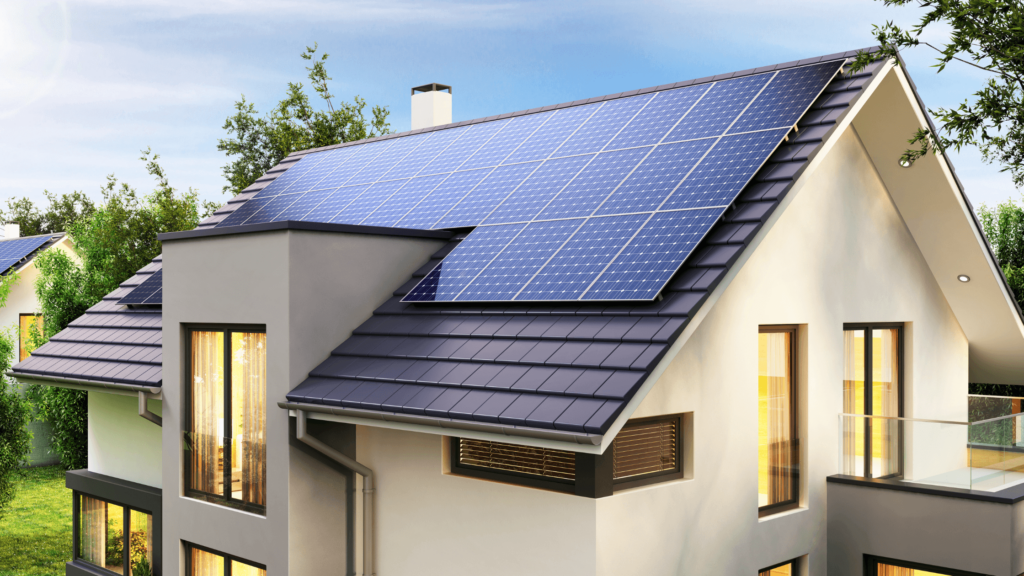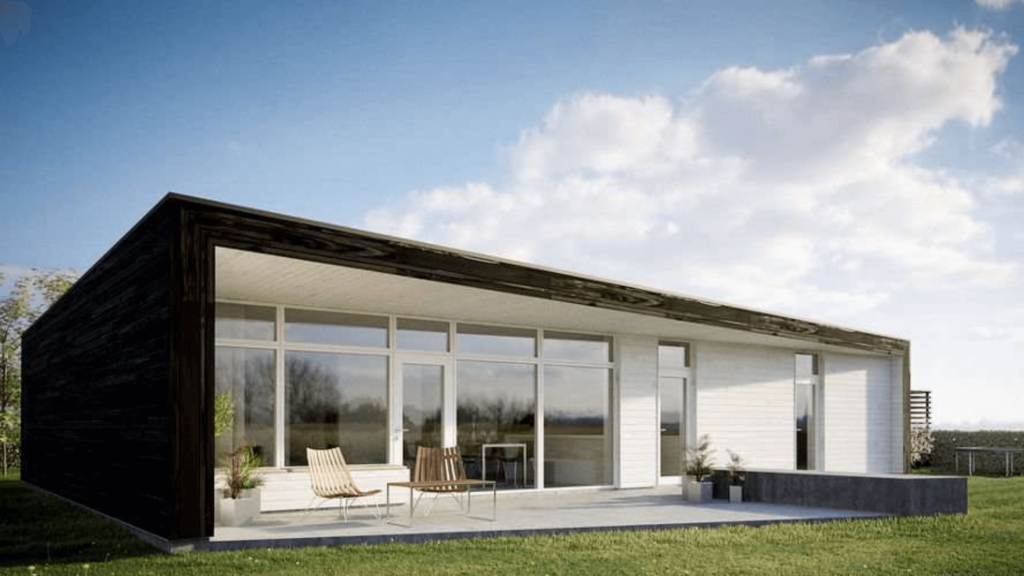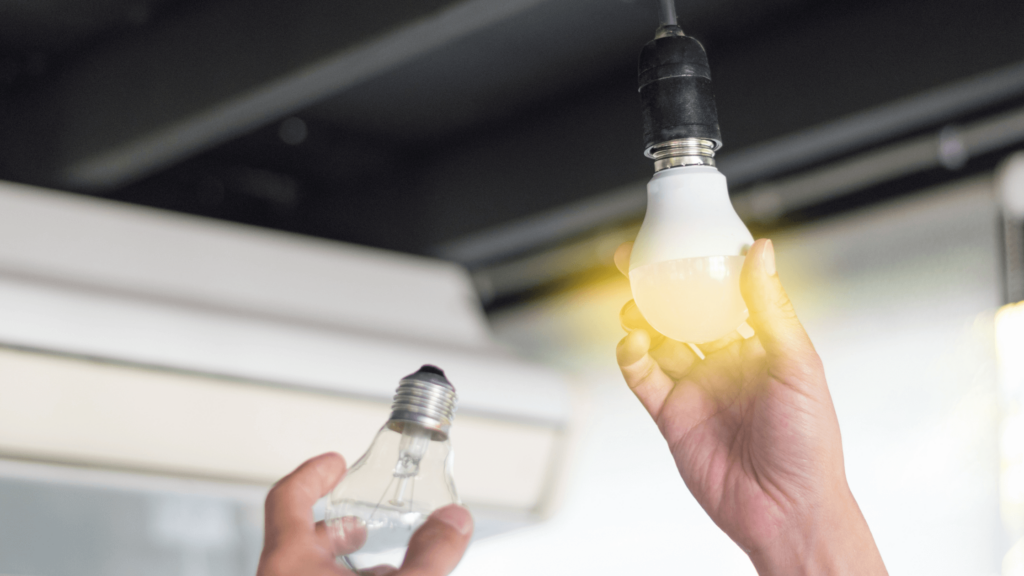Energy efficiency is more than a buzzword—making wise choices about energy use helps builders reduce their environmental impact, leading to significant long-term savings. Whether working on a residential or commercial project, incorporating energy-efficient practices such as solar energy into your builds can impact the planet and your bottom line.
16 tips to make your build more energy-efficient
1. Choose sustainable systems
Choosing sustainable systems is one of the easiest and most effective ways to boost energy efficiency in your builds. HVAC, plumbing, and electrical systems account for a large chunk of energy use, so selecting high-performance, energy-efficient options can result in significant savings over time.
A straightforward way to ensure you’re on the right track is by looking for Energy Star certification, which guarantees that the products meet high energy standards. For example, Energy Star-rated HVAC systems heat and cool buildings more efficiently and keep the indoor climate comfortable without increasing energy costs. Water-efficient plumbing fixtures reduce water usage, reducing the energy needed to heat that water. And when it comes to electrical systems, using Energy Star-certified appliances and lighting can dramatically lower energy consumption and greenhouse gas emissions.
2. Go solar

Solar energy is becoming an increasingly popular choice for homeowners and builders alike, and it’s easy to see why. More and more homes are adopting solar technology despite a few concerns around cost and efficiency. About 4% of U.S. homes have solar panels installed, which continues to grow yearly. For many, the long-term savings on energy bills are a significant draw—homeowners can save anywhere from $10,000 to $30,000 over the lifetime of their system, depending on factors like location and energy use.
However, it’s essential to consider both the pros and cons before diving into solar. The initial costs can be steep, often requiring a significant investment that may take several years to recoup. Plus, solar panel efficiency varies based on where you live—homes in sunnier areas will see more benefits than those in cloudier climates. There are also some concerns about the environmental impact of manufacturing and disposing of solar panels, though their use still significantly reduces long-term carbon emissions.
For builders, offering solar energy as part of a project can make properties more attractive to eco-conscious buyers while helping to protect against rising energy costs in the future. Just be sure to weigh the upfront investment against the potential savings and consider location when deciding if solar is the right fit.
3. Smart insulation
Quality insulation is one of the most effective ways to reduce energy loss in any build. It acts as a barrier, keeping conditioned air inside while preventing outside temperatures from affecting the indoor climate. Proper insulation helps maintain comfortable temperatures and reduces the workload on HVAC systems, resulting in lower energy consumption and utility bills.
Modern insulation materials like spray foam and rigid foam board offer advanced solutions for minimizing energy loss. Spray foam insulation, for example, expands to fill gaps and cracks, providing a seamless and airtight barrier that’s highly effective in both walls and attics. Its ability to reach hard-to-insulate areas makes it a popular choice for energy-efficient builds.
Rigid foam board insulation, on the other hand, offers a durable, moisture-resistant option for exterior walls, basements, and roofs. It provides a high R-value (a measure of thermal resistance) in a relatively thin profile, making it ideal for space-constrained areas.
4. LEED certification (for commercial buildings)
LEED (Leadership in Energy and Environmental Design) certification is one of the most widely recognized standards for green building practices. It provides a framework for creating energy-efficient, sustainable commercial buildings that minimize environmental impact. Projects that achieve LEED certification must meet strict requirements in several categories, including energy use, water efficiency, indoor air quality, and sustainable material sourcing. This certification pushes builders to design with energy efficiency in mind, from the planning phase through construction and operation.
By implementing LEED standards, builders can significantly reduce energy consumption in commercial buildings. For example, LEED-certified buildings typically use 25% less energy than non-certified structures. This reduction lowers utility costs and helps reduce carbon emissions, contributing to a more sustainable future.
The long-term benefits for builders pursuing LEED certification extend beyond energy savings. Due to improved indoor air quality and overall building performance, LEED-certified buildings often enjoy higher market value, reduced operational costs, and greater tenant satisfaction. In addition, these high-performance buildings are future-proofed to meet increasingly stringent energy regulations, offering a competitive edge in an evolving marketplace.
5. Passive solar design

Passive solar design is a strategy that utilizes the sun’s energy to naturally heat or cool a building without relying on mechanical systems. This approach focuses on window orientation, overhangs, and thermal massing to optimize how sunlight enters and affects the structure. For instance, correctly positioning windows to maximize natural light in winter and using overhangs to block excess sunlight in summer can significantly reduce the need for artificial heating and cooling.
Thermal massing refers to using materials like concrete or stone to absorb heat during the day and release it slowly at night, helping to regulate indoor temperatures. By incorporating these elements into a building’s design, builders can use the sun’s natural energy to maintain comfortable conditions, lowering energy consumption and utility costs.
Passive solar design contributes to energy efficiency and reduces the
environmental footprint by minimizing reliance on traditional HVAC systems. It’s an effective, low-cost method for making buildings more sustainable while enhancing long-term energy savings.
6. High-performance windows
Energy-efficient windows, such as double or triple glazing, low-E coatings, and gas fills, help reduce heat transfer and improve insulation. They prevent heat loss in winter and minimize heat gain in summer, reducing the need for artificial heating and cooling.
7. Energy-efficient lighting

Switching to LED lighting can significantly lower energy consumption. LEDs use about 75% less energy than traditional incandescent bulbs and last up to 25 times longer, making them ideal for residential and commercial builds. Incorporating daylight sensors and motion detectors can also optimize lighting use.
8. Cool roofs
Cool roofs reflect more sunlight and absorb less heat than standard roofing materials. By lowering the temperature inside the building, cool roofs can help reduce indoor cooling needs, especially in warmer climates. They also reduce the heat island effect in urban areas.
9. Geothermal heating and cooling
Geothermal systems tap into the earth’s consistent underground temperatures to heat and cool buildings more efficiently than conventional HVAC systems. These systems reduce energy use and are highly sustainable, though they can have higher upfront costs.
10. Energy recovery ventilation (ERV)
An ERV system improves indoor air quality while reducing the energy required to heat or cool incoming air. It transfers heat and humidity between incoming and outgoing airflows, recovering energy that would otherwise be lost.
11. Building envelope sealing
A well-sealed building envelope prevents air leaks, which can be a significant source of energy loss. Sealing gaps around doors, windows, and other openings, along with proper insulation, ensures that conditioned air stays inside while preventing drafts and moisture infiltration.
12. Greywater recycling systems
Greywater systems capture water from sinks, showers, and washing machines for reuse in landscaping or flushing toilets. This solution reduces the demand for water heating systems and conserves water, contributing to overall energy savings.
13. Building orientation
The positioning of a building on its site can significantly impact energy use. Proper orientation can maximize natural daylighting, reduce the need for artificial lighting, and take advantage of natural ventilation. In climates with strong sunlight, proper orientation can also minimize heat gain.
14. Smart building technologies
Installing intelligent building systems, such as automated lighting, climate controls, and energy management systems, allows occupants to optimize energy use in real-time. These technologies can adapt to occupancy levels, weather conditions, and other variables to ensure maximum efficiency.
15. Incorporate green spaces

Rooftop gardens, vertical gardens, and landscaped areas can significantly enhance a building’s energy efficiency. Green spaces provide natural insulation by absorbing sunlight, which helps regulate indoor temperatures and reduces the need for air conditioning. Additionally, they improve air quality by filtering pollutants and absorbing carbon dioxide, reducing the demand for mechanical air filtration systems.
Green roofs and permeable landscapes also manage stormwater, reducing the energy required to pump and treat water in urban areas. Beyond energy savings, green spaces contribute to biodiversity, improve occupant well-being, and enhance the property’s overall value. For builders, incorporating green spaces can help meet sustainability goals while creating more attractive, environmentally friendly buildings.
16. Move past Energy Star-certified systems
While Energy Star certification is an excellent benchmark for energy efficiency, builders and homeowners who want to go further should explore more advanced certifications like Zero Energy Ready Homes or net-zero homes. These certifications focus on minimizing energy usage to the point where the building produces as much energy as it consumes, creating a net-zero energy balance.
Zero Energy Ready Homes are built to a high efficiency standard and are designed to be easily upgraded to net-zero energy performance. They combine energy-efficient systems, renewable energy sources like solar, and high-performance insulation to drastically reduce energy needs. On the other hand, net-zero homes generate enough renewable energy on-site to fully offset the building’s energy consumption, making them a top-tier solution for sustainability.
Why energy efficiency matters for builders
Prioritizing energy-efficient designs brings numerous benefits for builders, both for the environment and their projects’ long-term success.
Energy-efficient buildings help reduce greenhouse gas emissions and decrease overall energy consumption, contributing to a lower carbon footprint. This solution aligns with growing consumer demand for greener practices and helps builders position themselves as environmentally responsible. Additionally, energy-efficient buildings translate to lower operational costs for end-users. Systems that use less energy, such as high-performance HVAC, insulation, and lighting, reduce utility bills, making these properties more attractive to homeowners and commercial tenants.
In today’s market, energy-efficient builds are rapidly becoming the new standard for residential and commercial properties. Buyers and investors are increasingly looking for buildings that perform well and run cost-effectively. By integrating energy-efficient solutions, builders can stay ahead of the competition and meet these rising expectations.
Lastly, governments are implementing more stringent energy regulations, and builders who adopt energy-efficient designs now are future-proofing themselves for upcoming compliance requirements. By adhering to higher standards today, builders ensure their projects remain relevant and meet future codes, avoiding costly retrofits down the line.
Energy efficiency is not just about immediate gains—it’s an investment in long-term sustainability and regulatory alignment.
The bottom line
In today’s market, energy-efficient buildings offer a significant competitive advantage, appealing to buyers and investors who prioritize sustainability and cost-effectiveness. By embracing energy-efficient practices, builders can future-proof their projects and position themselves as leaders in an evolving industry focused on sustainability and performance.


